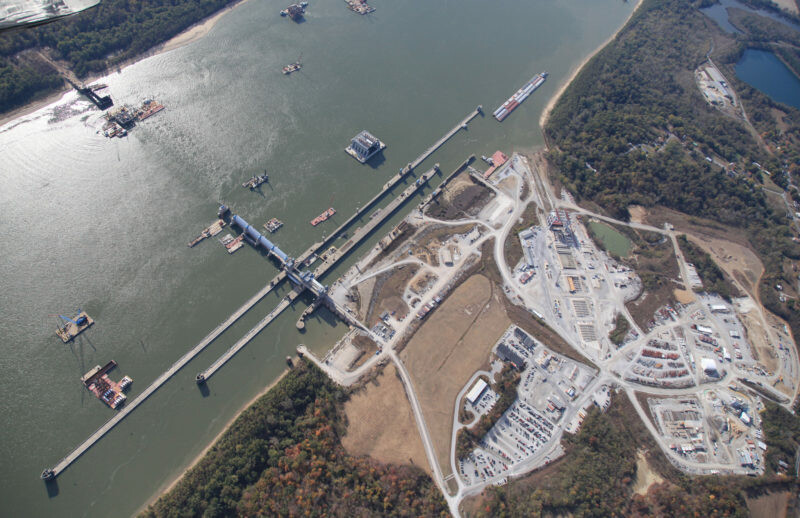I’ve been covering the workboat industry for a long time now and have many memories of writing stories about the difficulties the industry has had getting its story told in Washington and across the U.S., and how hard it is to secure sufficient, consistent funding for lock and dam improvements from Congress. Inland waterways, and maritime in general, always seem to play in the shadows of the big transportation guys — highways, railroads, airlines and trucks get all the attention and money.
But in the past five or so years, there’s been a most welcome and remarkable shift evolving.
Funding for inland waterways has been continuously on the rise, and aging, crumbling lock and dam infrastructures are now ground zero for construction cranes, deep digs and, once completed, state-of-the art mechanical wonders that will assure the long-term, uninterrupted movement of freight along the nation’s waterways.
The investments from taxpayers have been enormous, as these projects are costly, not just because they take years to complete and involve lots of manpower and construction materials, but also because they have been put off much too long and have suffered from stops and restarts due to funding hiccups in Washington.
Consider the progress:
- The Olmsted Lock and Dam project across the Ohio River has finally been completed, nearly 20 years overdue and severely over budget. But its completion is a big deal because funds can now be used for other back-logged waterways projects.
- The U.S. Corps of Engineers budget for civil works projects, which includes waterways construction and maintenance, has been steadily and consistently on the rise, allowing the Corps to better plan for funding and planning these complex construction projects.
- Congress just allocated $2.5 billion of the big infrastructure spending bill for inland waterways construction projects. This is a huge development that will fund to completion five out of the 15 top priority projects.
- Federal grants continue to flow to develop marine highways projects, many involving container-on-barge concepts, in several ports around the country, and for port infrastructure projects.
- The industry has successfully fought back attempts to disrupt the Jones Act, most recently efforts to secure Jones Act waivers during the U.S. ban on Russian energy imports.
But progress isn’t just limited to growth in federal funding. There has also been rising attention to resolving several other problems that dog the maritime industry.
For the past eight years, the state maritime academies have been lobbying Congress for funds to replace their obsolete training ships, many of which are more than 50 years old and are hand-me-down vessels from the federal fleet. President Biden just signed into law an appropriations bill that includes $350 million to build the final of five new training vessels, called the National Security Multi-mission Vessel, that could also be put into service during emergencies.
Over the next five years, the maritime schools, which produce some 70% of the nation’s licensed professional mariners, will finally have modern training platforms and can retire their old rust buckets. This is part of an unprecedented $1.6 billion shipbuilding program that was a “dog fight”to get done, Richard Bolzano, former deputy administrator Maritime Administrator and now CEO of the Dredging Contractors of America, told a recent webinar of the Propellor Club. “But we got it done.”
On another positive note, Congress has approved funds for the first time in recent years to add 12 new ships to the nation’s reserve fleet of commercial vessels that can be called up during a crisis. This is significant because it would be a 20% increase in the number of U.S.-flagged commercial ships that would be available for the military to charter during emergencies to supplement its sealift or to repair damaged undersea cables.
This would be done through the Tanker Security Program, which deploys militarily useful commercial U.S.-flagged commercial vessels to supply fuel, and the Cable Security Program, which can call up U.S.-flagged cable laying ships to repair damaged undersea cables. About 95% of intercontinental internet data moves through these cables, which are vulnerable to natural climatic events and prone to cybersecurity risks. “These are enormous victories, to get two programs like this done in a short four years,” Bolzano said.
All these are noteworthy developments for the maritime sector, testament to the lobbying efforts of groups like the Waterways Council and the American Waterways Operators among others and also to the industry that has paid money for advocacy and taken on some lobbying of its own on the state and federal levels, and to federal officials pushing for these programs.
But the work isn’t done. There will always be Jones Act challenges, budgets to approve, regulations to manage and oversight to make sure federal funding is spent as directed and federal rules are implemented as expected. But the groundwork has been laid, and this is quite a change from a decade ago.




